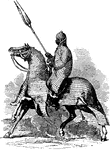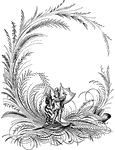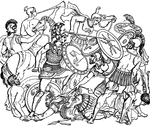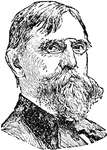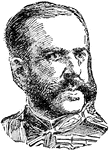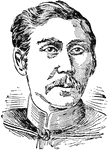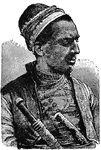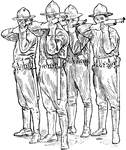
Aim
"Each rear-rank man aims through the interval to the right of his file leader and leans slightly forward…

Aim kneeling
"In aiming kneeling, the left elbow rests on the left knee, point of elbow i nfront of kneecap." —…
Aim lying down
"In aiming, lying down, raise the piece with both hands; rest on both elbows and press the butt firmly…
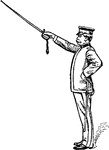
Drawn Saber
"When publishing orderes, calling the roll, etc., the saber is held suspended from the right wrist by…

Drawn Saber
"When arms are brought to the order the officers or enlisted men with the saber drawn order saber."…
Saber Return
"Officers and noncomissioned officers armed with the saber, when mounted, return saber without using…
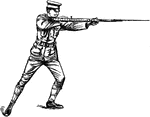
Bayonet Thrust
"The force of the thrust is delivered principally with the right arm, the left being used to direct…
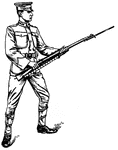
Bayonet Guard
"At the second command sake the position of guard; at the same time throw the rifle smartly to the front,…

Lunge
"Executed in the same manner as the thrust, except that the left foot is carried forward about twice…

Butt Strike
"Straighten right arm and right leg vigorously and swing butt of rifle against point of attack, pivoting…

High Parry
"Raise the rifle with both hands high enough to clear the line of vision, barrel downward, point of…

Low Parry
"Carry the point of the bayonet down until it is at the height of the knee, moving the point of the…

Low Parry
"These parries are rarely used, as an attack below the waist leaves the head and body exposed." —…

Left-Handed Rifle
"As additional instruction, the men may be permitted to wield the rifle left handed, that is on the…
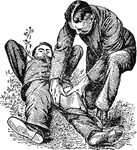
Femoral compression
"In bleeding from the thigh, leg, or foot press backward with the thumbs on the femoral artery at the…

Military Splint
"The carbine boot may be used to advantage in splinting fractures of the thigh and leg." — Moss, 1914
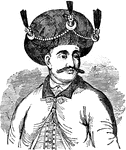
Hyder Ali
"The most formidible enemy whom the British encountered in India was Hyder Ali Khan, a soldier of fortune,…

Trojan horse
"According to the poets, it was by stratagem that this famous city was at last overcome. They tell us…
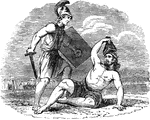
Codrus slain
"Determined to save his own country at the expense of his own life, Codrus disguised himself in a peasant's…
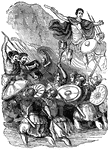
Caesar in England
"All histories of England commence with the invasion of Julius Caesar, the earliest event in that quarter…
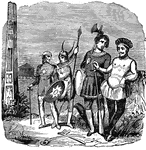
Saxons
"In the eleventh century, the Anglo-Saxons, originally the fiercest nation of the North of Europe, had…
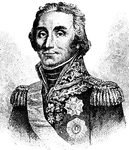
Massena
Duke of Rivoli, Prince of Essling, a French soldier in the armies of Napoleon and a Marshal of France.

John Logan
Soldier and statesman, born in Jackson county, Illinois, Feb. 9, 1826; died in Washington, D. C., Dec.…

Jean Marchand
A french soldier born in Thoissey, France, Nov. 22, 1863. He joined the army in 1883, but attended the…
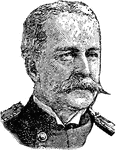
Nelson Miles
A soldier born in Wesminster, Mass., Aug. 8, 1839; died May 24, 1908. He studied in his native town…
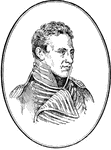
Zebulon Montgomery Pike
An American soldier and explorer for whom Pikes Peak in Colorado was named after.

Elwell Otis
A soldier born in Frederick City, Maryland, March 25, 1838. After graduating at Rochester University,…
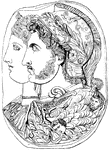
Gonzaga Cameo
"The Gonzaga Cameo. Ptolemy I. and Eurydice. Roman. In the St. Petersburg Museum." —D'Anvers,…
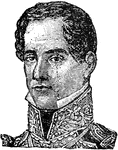
Santa Anna
A soldier and statesman, born in Jalapa, Mexico, Feb. 21, 1795; died June 20, 1876. He entered the Spanish…
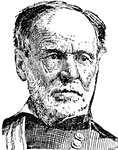
William Sherman
An American soldier, businessman, and author. He served as a general in the United States Army during…
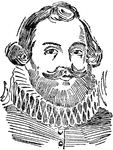
Miles Standish
A colonist and soldier, bornin Duxbury, England, about 1584; died in Duxbury, Mass., Oct. 3, 1656.
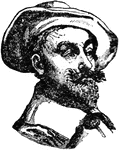
Albrecht Wallenstein
An eminent German soldier, born in Hermantz, Bohemia, Sept. 14, 1583; assassinated at Eger, Feb. 25,…
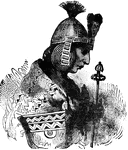
Inca Soldier
This illustration shows a soldier from the Incan Empire. This empire was centered in what is now Peru…
Sword
The sword of Miles Standish. Miles Standish was a soldier hired by the Pilgrims to be their military…
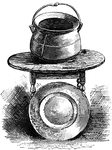
Pot and Platter
A pot and platter belonging to Miles Standish. Miles Standish was a soldier hired by the Pilgrims to…



